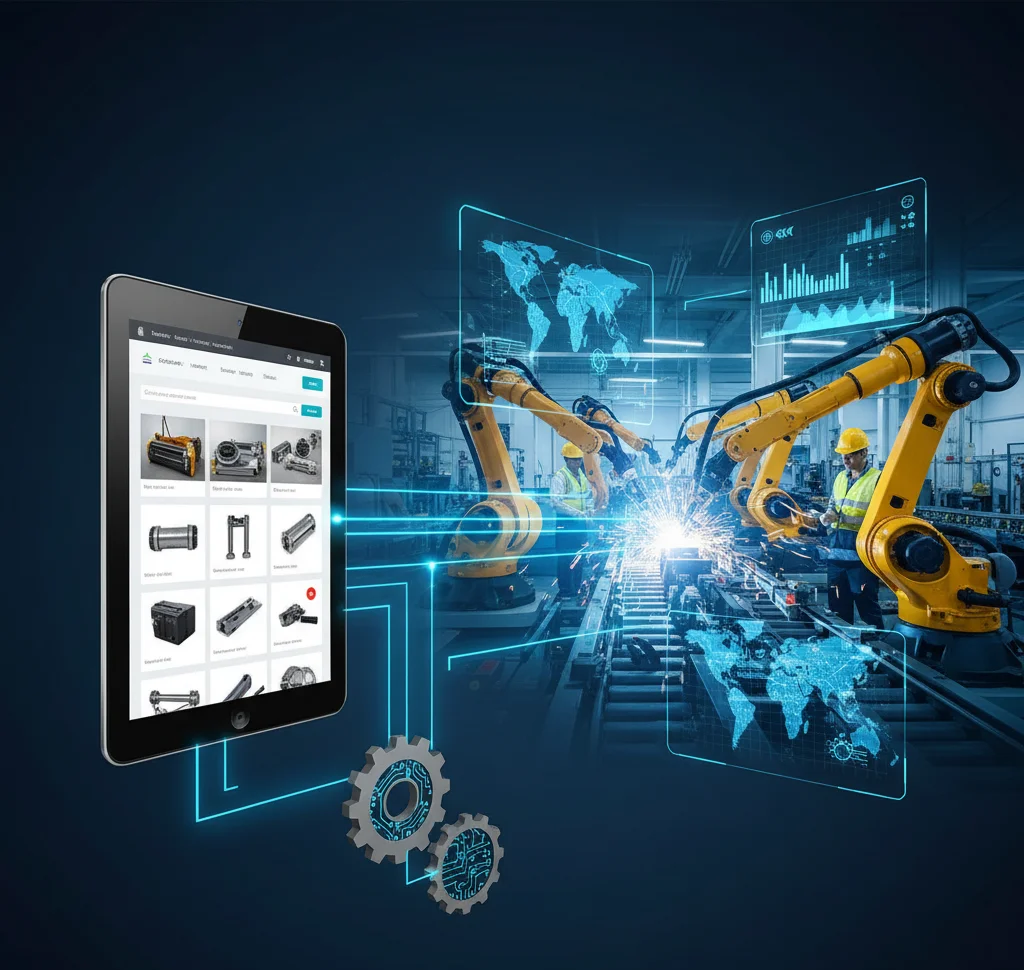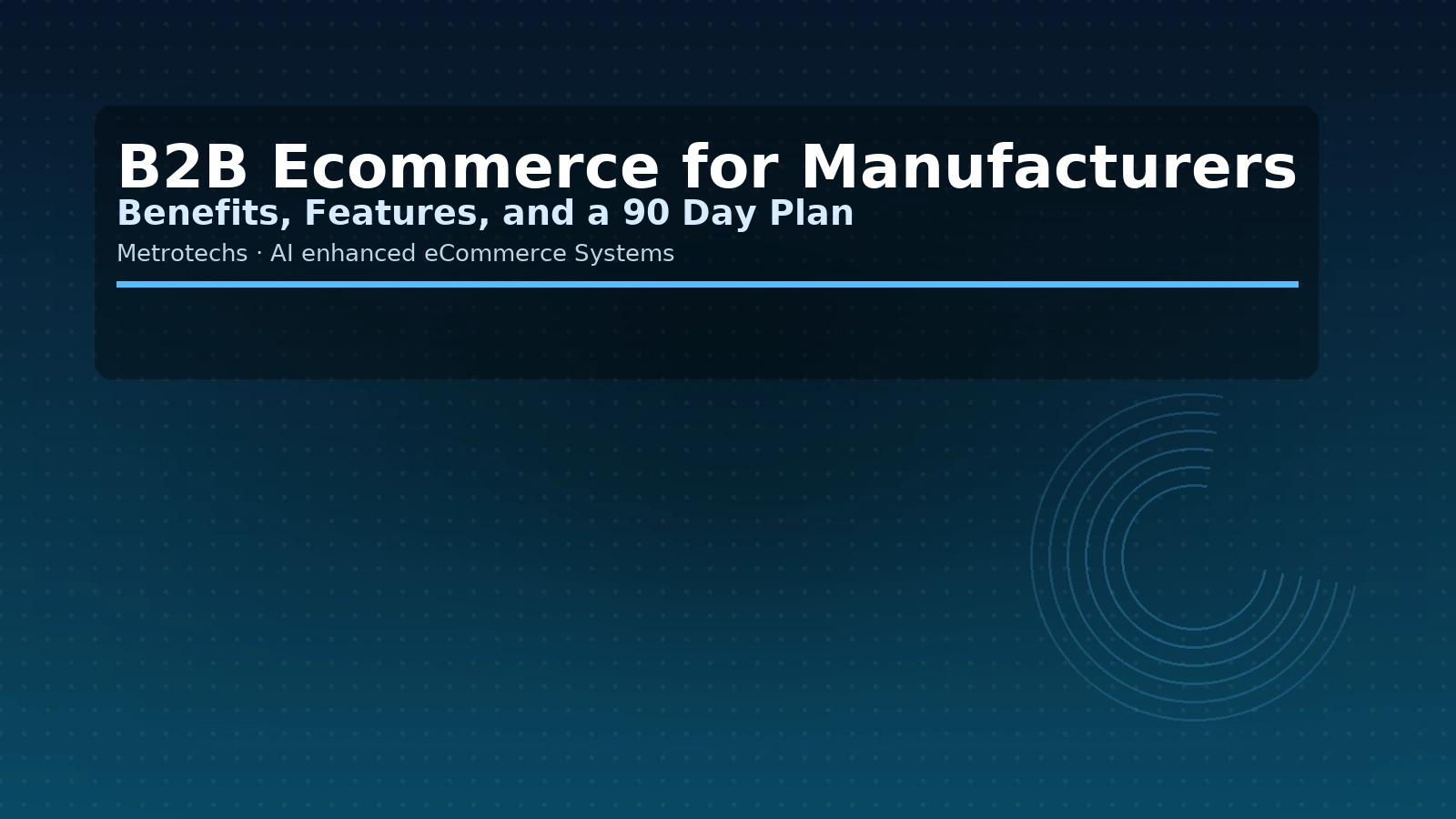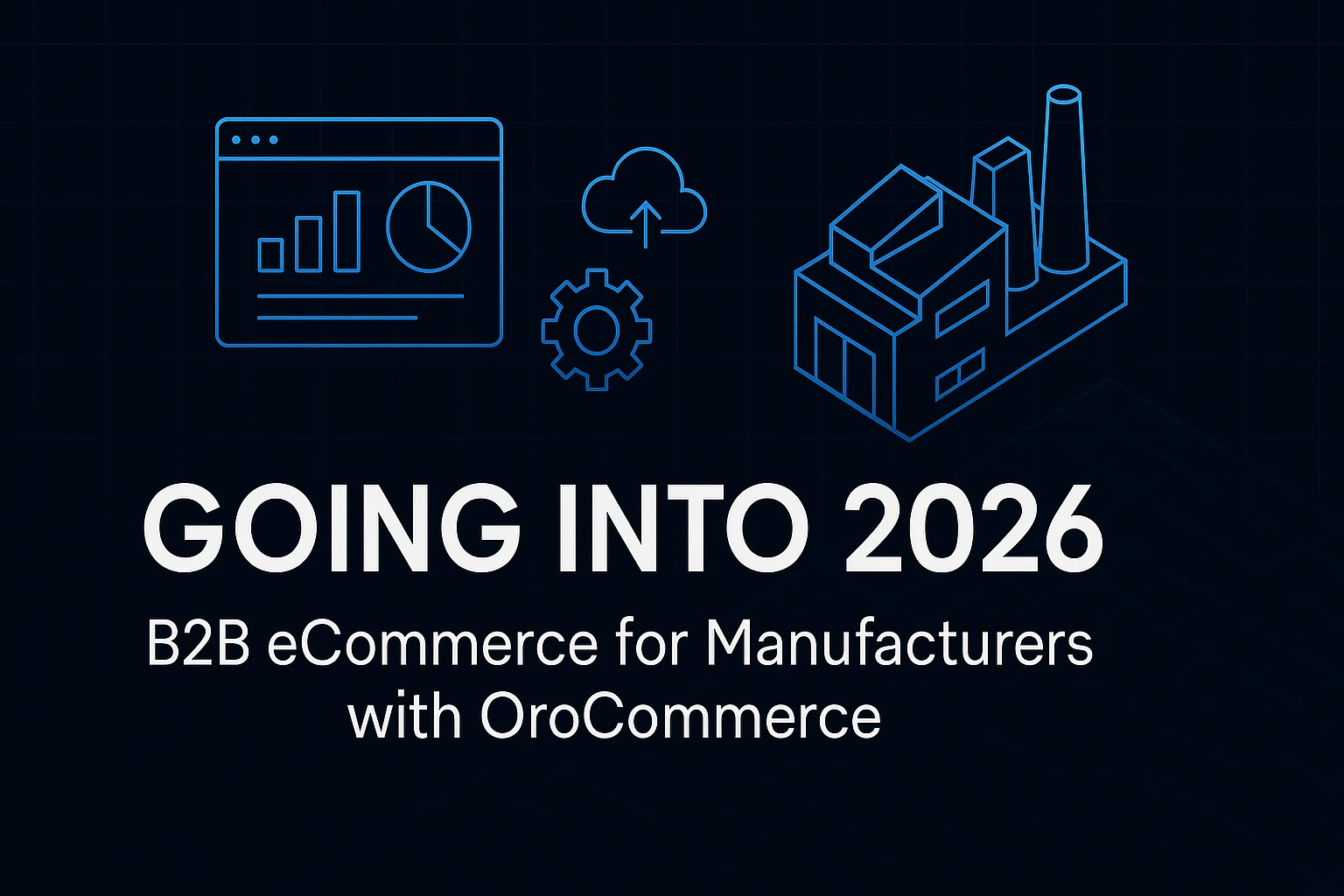Over the last decade, the business‑to‑business (B2B) landscape has quietly but decisively shifted online. The pandemic accelerated trends that were already emerging: buyers got used to placing orders at any time of the day, comparing products and pricing across vendors within minutes and managing their accounts without waiting on a salesperson to call them back. Traditional sales‑driven models are giving way to self‑service platforms, and companies that fail to adapt risk being left behind.
Industry research backs up this transformation. Gartner reports that 83 % of B2B buyers want to manage orders and accounts online. Forrester forecasts that about 70 % of B2B buyers will be millennials by 2025—a demographic that grew up with Amazon‑style experiences and expects the same convenience and transparency at work. McKinsey’s 2024 B2B Pulse survey found that three‑quarters of B2B customers prefer digital self‑service over interpersonal interaction. When researchers polled executives across manufacturing and wholesale companies, 85 % said they already have an e‑commerce storefront or self‑service portal, and two‑thirds are increasing investment in customer portals.
These numbers highlight a simple reality: self‑service portals are no longer a nice‑to‑have. They are quickly becoming the dominant way business buyers want to transact. For manufacturers and distributors, the concept of a “dealer portal” is the natural extension of this shift. A dealer portal is a secure online hub where channel partners—dealers, distributors or resellers—log in to place orders, check inventory and pricing, download marketing assets and track deliveries without waiting on your team to respond to each request. It combines the ease of e‑commerce with business‑specific functionality like tiered pricing, contract terms, order approvals and integration with back‑office systems.
In this blog post we’ll explore five compelling reasons manufacturers and distributors need to invest in dealer portals and why this technology is essential for success in the new B2B reality. We’ll use recent research to illustrate why self‑service is no longer optional, how portals improve efficiency and customer satisfaction, and how you can harness them to gain a competitive advantage.
1. Modern Buyers Demand Self‑Service and Digital Convenience
One of the biggest myths still lingering in some industries is that business buyers prefer high‑touch, relationship‑driven sales interactions. While relationships still matter, the way they form has changed drastically. Today’s buyers expect consumer‑grade experiences—fast, intuitive, available whenever they need them. The data paints a clear picture:
-
Forrester predicts that millennials will account for about 70 % of B2B buyers by 2025. This generation grew up with smartphones and online shopping and now carries those expectations into B2B purchasing. They value speed and autonomy; long email chains or waiting for a rep to respond to a quote request feels outdated.
-
Gartner’s research indicates that 83 % of B2B buyers prefer to manage their orders and accounts online. In other words, the majority want to log into a portal, place an order or check status and move on with their day.
-
A McKinsey study found that 75 % of customers now prefer digital self‑service over interpersonal interaction, a dramatic increase compared with just a few years ago.
-
OroCommerce notes that 82 % of buyers want to compare products and pricing online before contacting a sales representative. They want to do their homework first; only then are they willing to speak with sales when necessary.
As a manufacturer or distributor, failing to provide a self‑service portal is akin to forcing your customers to shop by catalogue. A dealer portal offers precisely the experience modern buyers crave: they can view real‑time inventory, configure orders, calculate pricing with their negotiated discount, download spec sheets and track shipments—all without sending an email or picking up the phone. When Softengine describes its customer portal for manufacturers, the company notes that procurement managers can log in at midnight, see live inventory, apply negotiated discounts and place multi‑location orders without waiting on a sales team. This autonomy translates into greater satisfaction and deeper loyalty because buyers feel in control of the process.
Moreover, a self‑service portal is not about replacing sales; it’s about repositioning sales as strategic advisors. When customers can handle basic tasks themselves, your salespeople are freed up to assist with complex configurations, negotiate bulk deals and provide consultative expertise. As the Shopify report notes, self‑service actually empowers sales teams to focus on high‑value interactions rather than repetitive order taking. The result is a hybrid approach where digital convenience coexists with personal relationships.
2. Faster Quoting, Ordering and Speed‑to‑Market
In industries like manufacturing and distribution, speed is everything. Dealers often operate on thin margins and tight deadlines; delays in pricing, quoting or order fulfillment can mean losing a sale to a competitor. Traditional processes—email threads, faxed order forms, manual price list updates—introduce friction at every step.
The dealer portal addresses these pain points head‑on. OroCommerce points out that many manufacturers and distributors turn to dealer portals to untangle how orders, pricing, marketing and service flow between the company and its channel partners. Without a portal, orders might sit in an inbox until a representative can key them into the ERP, price lists might be out of date, and marketing assets may exist in multiple emails or file folders. These delays cause dealers to quote outdated prices or order from someone else who can move faster.
With a portal, new product releases, updated specifications and pricing changes reach dealers instantly. There’s no risk of someone using an old spreadsheet. When your company adjusts pricing or launches a promotion, every dealer sees the update the moment they log in. This “speed‑to‑market” capability is essential in sectors where margins are thin and product lifecycles are short.
Consider the example of Dunlop Protective Footwear. After implementing its portal, the company repurposed two full‑time employees from handling routine questions to more strategic work. Orders no longer sat in email until someone was back at their desk. Quotes went out faster. Dealers could download marketing kits or confirm ship dates on their own. As a result, conversion rates and average order value climbed.
Quick quoting and ordering aren’t just about responsiveness—they prevent errors. Softengine notes that many manufacturers still process orders through phone calls and spreadsheets, which work “until they don’t”. When dealers enter data manually, mistakes can occur: wrong part numbers, misapplied discounts, missing addresses. A portal automates these steps; dealers build orders within the system, apply their agreed‑upon pricing, and the platform can even convert units of measure or bill of material (BOM) rules automatically. Orders flow directly to fulfillment without manual rework.
3. Operational Efficiency and Scalability
Running a dealer network is a complex operation. You might have hundreds of dealers, each with different price lists, territories, order frequencies and marketing needs. Traditional processes require significant human effort. Sales reps handle basic order entry and status inquiries; customer service chases down shipping updates; marketing sends out individual emails; IT manually reconciles ERP data with spreadsheets. The result is a high cost structure and limited scalability.
A dealer portal changes the equation by automating routine tasks and allowing your team to scale. The Future of Commerce’s research shows that 46 % of companies cite cost and time savings through optimized and automated processes as a key benefit of B2B portals. With a portal, dealers can perform tasks like reordering a part, checking invoice status, or approving other users’ shopping carts without contacting your staff. They get immediate answers, and your employees reclaim time.
The efficiency extends across departments:
-
Sales teams spend less time on data entry or answering “Do you have this in stock?” They can focus on complex negotiations and account strategy. In fact, 32 % of B2B sellers report that more than half of their offline sales are influenced by online activity, so nurturing leads through the portal has a tangible impact on revenue.
-
Customer service teams field fewer calls about order status or shipping because customers can track everything via the portal. Unilog emphasizes that customer portals empower buyers by giving them 24/7 access to account information and order history, which reduces the volume of support tickets.
-
Marketing teams gain a controlled distribution point for sell sheets, spec updates and brand guidelines. Instead of emailing attachments one by one, they upload an asset once and all dealers can access the most recent version.
-
IT and operations teams see cleaner order data and fewer returns caused by outdated specs. Portals integrate directly with ERP, CRM and product information management (PIM) systems, eliminating duplicate entry and ensuring that pricing, inventory and product content remain consistent. This integration fosters accuracy and reduces maintenance headaches.
What about scaling? Without a portal, onboarding new dealers or expanding to new regions means hiring more staff to handle orders, account setups and training. With a portal, adding new partners is as simple as creating a login and assigning permissions. When your processes are digitized and standardized, you can handle a larger volume of transactions and a wider geographic footprint without proportionally increasing headcount. Dunlop’s experience—repurposing two employees after deploying its portal—illustrates the cost savings and scalability potential.
4. Stronger Dealer Relationships and Loyalty Through Personalization
Dealers aren’t merely customers; they’re partners representing your products to end‑customers in local markets. Their success directly affects your success. A portal that treats every dealer the same misses an opportunity to strengthen relationships by delivering personalized experiences.
Unilog’s article on B2B customer portals highlights the importance of features such as favorite items lists, saved carts, quick links to request quotes and the ability to approve users. These small conveniences make a big difference when dealers need to reorder frequently or manage orders across multiple users. The portal can also be customized with customer‑specific catalogs and pricing. For instance, a construction materials distributor might create separate catalogs for residential and commercial dealers, each with its own pricing tiers and promotional bundles.
Softengine expands on personalization, noting that modern portals let you tailor catalogs and promotional offers based on each client’s profile. Key accounts might see volume discounts and exclusive products, while smaller buyers see standard lists without requiring your team to manually produce custom quotes. This self‑service personalization at scale fosters loyalty because dealers feel recognized and valued. They know the portal reflects their negotiated terms and business relationship.
The portal can also serve as a training and marketing hub. OroCommerce points out that partner portals often provide training modules, certifications and marketing playbooks. By combining these resources with ordering functionality, the dealer portal keeps dealers engaged between purchases. They can download co‑branded marketing kits or sign up for rebate programs directly inside the portal. Marketing teams can roll out campaigns across regions consistently, and dealers receive ready‑to‑use materials without chasing down a rep.
Beyond personalization, dealer portals deliver transparency and 24/7 access. Softengine highlights the importance of live order tracking, accessible purchase history, document downloads and real‑time inventory. When dealers can see exactly where their orders stand and download compliance documents whenever needed, it builds trust and reduces frustration. They no longer send frantic emails asking “Where’s my shipment?” or worry about using outdated spec sheets.
Trust and satisfaction translate directly to loyalty. Unilog notes that a frictionless self‑service experience leads to greater customer satisfaction and retention. When dealers know they can handle business on their own schedule and always find accurate information, they’re more likely to stick with your brand even when competitors approach them.
5. Data Integration, Insights and Competitive Advantage
A final, often overlooked reason to invest in a dealer portal is the rich data and insights you gain. Portals act as the digital front door to your enterprise systems. By integrating them with ERP, CRM and PIM platforms, you provide dealers with accurate data and simultaneously capture valuable information about customer behavior.
OroCommerce emphasizes that portals live or die on trust: if inventory shows as “available” when it’s not, or specs are outdated, dealers will stop logging in. The solution is direct, reliable connections to your back‑office systems. When pricing, inventory, product content and credit limits are all pulled from a single source, the portal becomes a trusted tool for both your dealers and your internal teams.
This integration pays off in multiple ways:
-
Better demand forecasting and planning. Softengine explains that portals can provide reorder recommendations, spend trends and usage analysis through dashboards and scheduled reports. These insights inform your forecasting and production planning, helping you reduce stockouts or overproduction.
-
Improved marketing and sales alignment. Marketing teams can track portal engagement—such as product views, quote requests or downloads of marketing kits—and tailor campaigns accordingly. Sales teams can see which products dealers frequently look at and proactively suggest bundles or cross‑sell opportunities.
-
Cross‑channel influence on offline sales. Research shows that 32 % of sellers say more than half of their offline sales are influenced by online activity. Even when dealers still place a phone call to finalize a large order, the portal often shapes their decision by providing pricing, product comparisons and technical data. By capturing that online behavior, you can better understand the full customer journey.
-
Evidence‑based profitability. A majority (65 %) of B2B sellers report higher profits after implementing e‑commerce. Portals contribute to this lift by reducing costs and increasing average order values; the data they generate helps you calculate return on investment and identify further efficiency gains.
The broader market context underscores the urgency. Gartner predicts that by 2025, 80 % of B2B sales interactions between suppliers and buyers will occur in digital channels. Meanwhile, research from DynamicWeb shows that 85 % of B2B organizations already operate an e‑commerce storefront or self‑service portal and 66 % are increasing investment in customer portals. In other words, your competitors are likely investing in portals, and buyers will gravitate toward whichever supplier offers the easiest and most informative experience. Failing to invest could result in lost market share and slower revenue growth.
Bringing It All Together: A New Paradigm for Channel Relationships
When you step back and look at the trends holistically, the dealer portal becomes less of a discrete technology project and more of a strategic shift in how manufacturers and distributors engage with their channels. Instead of acting as gatekeepers of information, you become enablers of frictionless commerce.
The benefits cut across the organization:
-
Buyers gain autonomy—they control their buying journey, access the data they need and receive personalized service without delays.
-
Sales teams become strategic advisors, focusing on high‑value deals and complex configurations rather than order entry.
-
Marketing teams deliver consistent messaging and have a single channel to distribute training, campaign kits and brand guidelines.
-
Operations and IT teams enjoy cleaner data, fewer errors and easier integration with core systems.
-
Executives gain insights into dealer behavior, product trends and overall channel performance.
Perhaps most importantly, you position your business for the future. Digital self‑service isn’t a fad; it’s a fundamental shift in B2B behavior. Millennials and younger buyers will continue to ascend into decision‑making roles, and they will expect seamless online experiences. Meeting those expectations builds trust and loyalty. Failing to do so sends buyers to competitors who better serve their needs.
Conclusion: The Time to Invest Is Now
If you’ve been delaying a dealer‑portal project because of competing priorities or concerns over complexity, the window to act is closing. The data is unambiguous: B2B buyers overwhelmingly prefer self‑service. Digital channels already account for the majority of supplier‑buyer interactions. Companies that have embraced portals report cost savings, faster order cycles and higher profits. Meanwhile, a majority of manufacturers and distributors are already investing heavily in these platforms.
A dealer portal is more than a website—it’s a complete reimagining of how you engage with and support your channel partners. By delivering digital convenience, real‑time data, personalization and automation, you cultivate stronger relationships, improve efficiency and unlock new sources of value. In a market where differentiation is hard to come by, the customer experience becomes a key competitive lever.
So ask yourself: Are your dealers still emailing orders, waiting days for price lists and chasing down shipping updates? If so, it’s time to meet them where they want to be: online, on their terms, with a dealer portal built for the new era of B2B commerce.
Sources
-
Shopify – “B2B Self‑Service Is Your Hands‑Free Sales Channel in 2025.”
Shopify’s enterprise team explains why self‑service is now a baseline expectation for modern B2B buyers, noting that millennials already dominate buying roles and that most customers prefer to manage orders online.
Read more: https://www.shopify.com/enterprise/blog/b2b-self-service -
OroCommerce – “The Complete Guide to B2B Dealer Portals.”
This detailed guide defines dealer portals and explores why businesses are adopting them. It highlights how portals improve speed to market, ensure channel consistency, and let buyers compare products and pricing before contacting a sales rep.
Read more: https://oroinc.com/b2b-ecommerce/blog/the-complete-guide-to-b2b-dealer-portals/ -
The Future of Commerce – “B2B Portal: Benefits, Examples, and Software Selection Tips.”
A broad look at the benefits of B2B portals, citing research that shows most buyers prefer digital self‑service and predicting that digital channels will account for the majority of B2B sales interactions by 2025.
Read more: https://www.the-future-of-commerce.com/2024/05/28/b2b-portal-benefits/ -
DynamicWeb – “2025 Report Reveals B2B eCommerce Trends & Strategies.”
This 2025 trend report summarizes input from more than 400 professionals. It notes that 85 % of B2B organizations already have a self‑service portal and that two‑thirds are increasing investment in these tools to stay competitive.
Read more: https://dynamicweb.com/resources/insights/news-articles/dynamicwebs-2025-report-reveals-b2b-ecommerce-trends-strategies -
Unilog – “B2B Customer Portal: What They Are & How You Benefit.”
Unilog outlines key portal features such as instant access to order history, invoices and quotes. The piece also shares data on how self‑service is driving willingness to spend more online.
Read more: https://www.unilogcorp.com/resources/blog-posts/b2b-customer-portals-the-must-have-offering-for-2025/ -
Softengine – “B2B Customer Portal: Unlocking 24/7 Self‑Service in Manufacturing.”
A manufacturer‑focused article explaining how ERP‑integrated portals enable live inventory viewing, negotiated pricing, multi‑location ordering and secure payments. It stresses that buyers now expect autonomy and transparency.
Read more: https://softengine.com/b2b-customer-portal-unlocking-24-7-self-service-in-manufacturing





